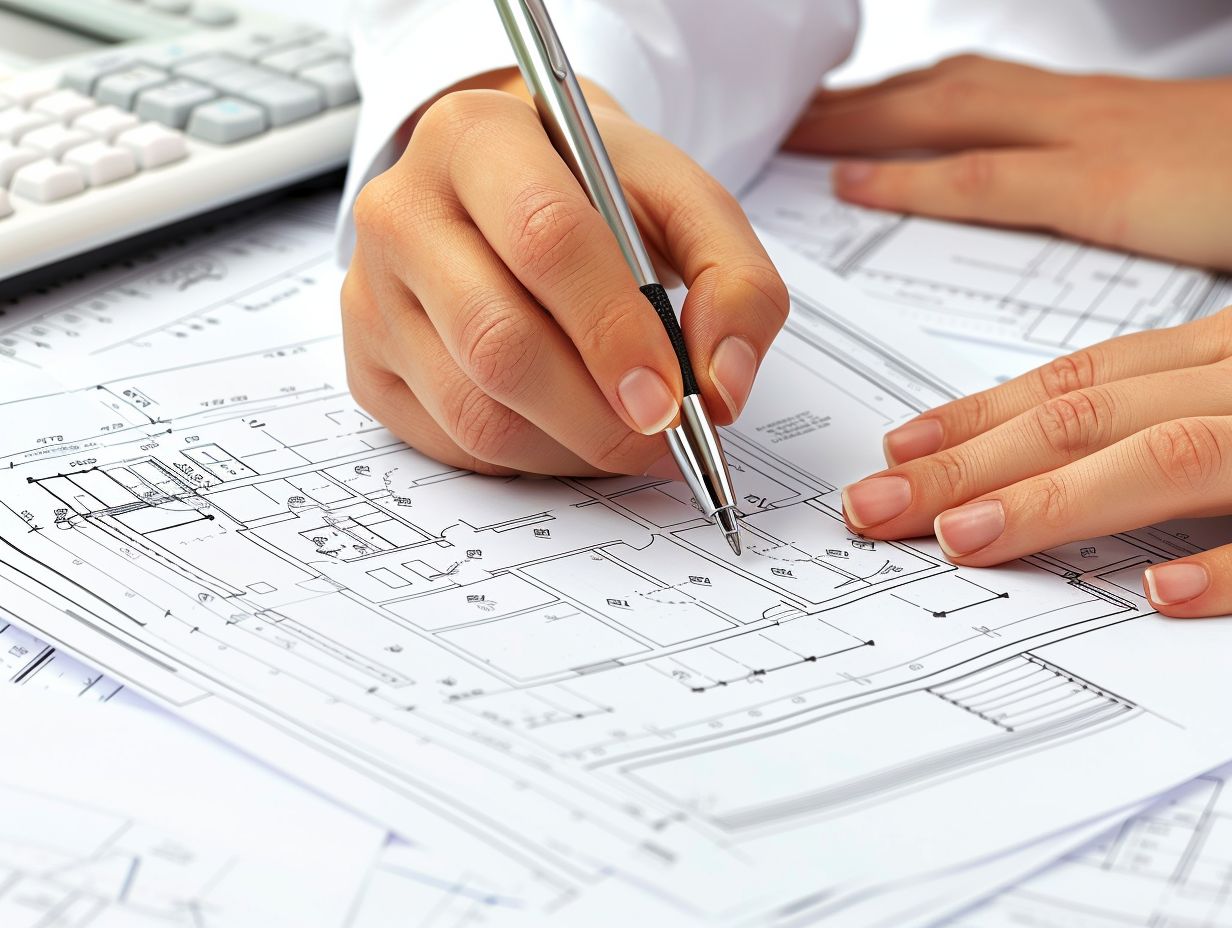
Your Guide To Architectural Drawings For Home Additions
Consideration of a home addition or renovation project may prompt uncertainty about the initial steps to take. Architectural drawings play a crucial role in any construction endeavor, serving as a detailed guide for both homeowners and contractors.
This thorough guide delves into the significance of architectural drawings, the various types that may be encountered, the methodology behind their creation, and strategies for effective collaboration with an architect.
Additionally, common errors to sidestep will be highlighted, alongside recommendations for ensuring the success of the project. Whether the goal is to plan a new addition or gain a comprehensive understanding of the drawings pertaining to an existing residence, this article provides a comprehensive overview of the subject matter.
What are Architectural Drawings?
Architectural drawings are intricate illustrations produced by architectural designers to convey design plans and construction specifications. Referred to as blueprints or construction documents, these drawings hold significant importance in securing building permits and directing the construction process.
They serve as a visual representation of the architect’s concept, encompassing a range of elements including floor plans, elevations, sections, and details. By illustrating spatial arrangements, materials, dimensions, and structural components, architectural drawings present a comprehensive reference for contractors and builders to adhere to. Furthermore, these drawings facilitate cost estimation, material selection, and coordination among various trades involved in a construction endeavor. They play a crucial role in ensuring adherence to building codes and regulations, thereby enhancing the safety and functionality of the constructed environment.
The Importance of Architectural Drawings
Architectural drawings play a critical role in guaranteeing the structural stability of a building, adhering to building codes, and integrating desired architectural elements. The effectiveness of project management frequently relies on the precision and comprehensiveness of these drawings.
Benefits for Homeowners and Contractors
Architectural drawings hold significant value for both homeowners and contractors, facilitating a streamlined process for home additions, renovations, and construction projects. They play a crucial role in project coordination, enabling efficient execution and aiding in the selection of appropriate building materials.
These highly detailed drawings function as a visual guide for all stakeholders involved, providing a clear depiction of the project’s scope and design objectives. Serving as a common point of reference, architectural drawings help minimize ambiguities and ensure the project’s smooth progression. Moreover, these drawings play a pivotal role in obtaining essential permits and approvals by clearly outlining the proposed alterations or new construction. Their precision and accuracy also contribute to cost-effectiveness by reducing the likelihood of errors or rework during the construction phase.
Types of Architectural Drawings
Architectural drawings comprise a diverse array of types, encompassing:
- floor plans delineating interior spaces,
- detailed exterior elevations highlighting the building’s aesthetics,
- plumbing schematics delineating water and waste systems,
- architectural visualizations depicting design concepts, and
- comprehensive design documentation.
Floor Plans, Elevations, and More
Floor plans provide comprehensive room dimensions and layout configurations, while elevations emphasize architectural elements and exterior finishes. Additionally, essential drawings encompass digital renderings for visual representation and foundation plans for structural support.
Floor plans serve as the foundational document for interior design, determining the size of each room and maximizing space efficiency. They are pivotal in establishing the groundwork for a functional and visually appealing environment.
Conversely, elevations showcase the intricate features of a building’s facade, offering a glimpse into the overall design and aesthetic.
Integrating digital renderings into the design process offers clients a lifelike preview of the completed project, facilitating decision-making and modifications.
Foundation plans, essential for ensuring structural integrity, delineate the underlying support system, guaranteeing the stability and safety of the building.
The Process of Creating Architectural Drawings
The production of architectural drawings entails:
- The conversion of design concepts into comprehensive plans
- The development of a project timeline for implementation
- The specification of building materials and construction techniques
- The selection of appropriate materials
- The comprehensive analysis of the project
From Concept to Final Plans
The progression from conceptualization to the completion of architectural blueprints involves a series of systematic steps. These steps include the refinement of design aesthetics, the utilization of 3D modeling for visual representation, the establishment of project budgets for cost estimation, the integration of custom design elements, and the assessment of the property for site-specific considerations.
Throughout this transformative process, a collaborative effort among designers facilitates the realization of the initial vision through iterative refinement and enhancement of the structure’s aesthetic appeal. The incorporation of 3D modeling software provides stakeholders with a realistic visualization of the project, enabling knowledge-based decision making regarding design elements, materials, and spatial arrangements. Adherence to budgetary constraints ensures that the final architectural plans exhibit innovation while remaining financially viable, achieving a harmonious balance between creativity and practicality. Custom design features are integrated to impart a distinctive touch to the project, reflecting the client’s preferences and unique style. Lastly, property assessments are paramount in evaluating the environmental impact and potential utilization of the site, thereby leading to the development of sustainable and contextually responsive architectural designs.
Understanding and Reading Architectural Drawings
Comprehension of architectural drawings involves the interpretation of accurate measurements, adherence to zoning regulations and project specifications, application of fundamental architectural principles, and recognition of essential design elements that delineate the project’s scope and vision.
Key Elements and Symbols
Architectural drawings encompass a diverse array of critical elements and symbols, ranging from specific architectural terminology to intricate drawings that serve to inspire design modifications. These elements play an essential role throughout the building inspection procedures.
The use of architectural terminology facilitates precise communication of design specifications, while detailed illustrations aid in visualizing the final product prior to the commencement of construction. Through the incorporation of design inspirations into drawings, the architect’s vision and aesthetic preferences can be effectively conveyed, thereby guiding the construction process. Revision markers are of paramount importance as they indicate alterations and updates during the design phase, ensuring alignment among all stakeholders.
During building inspections, these elements assist inspectors in comprehending the intended design, discerning any discrepancies, and verifying compliance with safety and regulatory standards.
Working with an Architect for Home Additions
Engaging with an architect for home additions involves:
- Conducting comprehensive client consultations
- Facilitating seamless project coordination with building contractors
- Clearly defining the project scope
- Utilizing the expertise of professional architects to attain design excellence
Collaboration and Communication
Effective collaboration with architects for home additions necessitates strong project management, precise cost estimation, efficient project implementation, presentation of architectural portfolios, and alignment with unique project demands.
Clear and consistent communication plays a vital role in this collaborative endeavor. Regular meetings and updates with the architects are essential to ensure alignment on project timelines, design components, and budgetary constraints. Openness in information sharing and addressing any challenges that arise cultivates a constructive working rapport. Furnishing comprehensive briefs and engaging in detailed discussions on project-specific prerequisites can mitigate misunderstandings and guarantee that the proposed additions align with the homeowner’s expectations.
Exhibiting adaptability and a willingness to adjust to modifications as needed can further enhance the likelihood of achieving a successful result.
Common Mistakes to Avoid with Architectural Drawings
To prevent errors in architectural drawings, it is imperative to meticulously consider crucial design elements, adhere strictly to project timelines, carefully choose appropriate building materials, ensure efficient project coordination, and successfully pass comprehensive building inspections to ensure compliance with regulations.
Tips for a Successful Project
Successful completion of architectural projects necessitates the optimization of space utilization, a focus on sustainability practices, the establishment of precise building specifications, collaboration with structural engineers, and conducting comprehensive project analyses for well-knowledge-based decision making.
When emphasizing space optimization, it is imperative to not only evaluate the layout and functionality but also to integrate innovative storage solutions and adaptable designs. Sustainable considerations should encompass the incorporation of eco-friendly materials and the implementation of energy-efficient systems to diminish the project’s environmental footprint. Elaborate building specifications are vital in guaranteeing meticulous planning and execution of every aspect of the construction process, thereby averting costly errors and delays. Collaboration with structural engineers guarantees that the design is not solely visually appealing but also structurally robust. Project analysis aids in the monitoring of timelines, budgets, and quality benchmarks, permitting adjustments and enhancements as needed throughout the project’s lifecycle.




No Comments